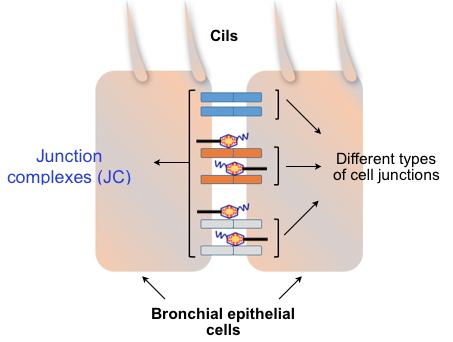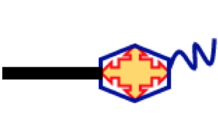Bronchial epithelial cells play a central role in maintaining a tight and selective physical barrier by setting up structures called "junction complexes" (JC; see figure), located between the cells. This barrier protects the respiratory tract against pollutants, allergens, fine particles and microorganisms. In infectious and inflammatory pneumopathies such as cystic fibrosis, excessive permeability of this pulmonary epithelium is observed. The molecular mechanisms underlying the increased permeability are poorly understood and deserved to be investigated.
During their study of the mechanisms involved in maintaining JC, researchers at the Irig identified normal cellular prion protein (PrPC) as essential protein that control JC homeostasis. They demonstrated that, in addition to its interaction with JC proteins, PrPC contributes to the maintenance of the epithelial barrier by protecting JC proteins from degradation induced by inflammation and copper associated oxidative stress.
These results provide new insight into the role of PrPC in the pulmonary barrier defense. Hence, PrPC protein should be ranked among proteins involved in the protection of the lung barrier in infectious and inflammatory pneumopathies.


PrPC is the cellular form of the prion protein which in its infectious form plays a key role in the transmission and pathogenesis of the transmissible spongiform encephalopathies diseases.